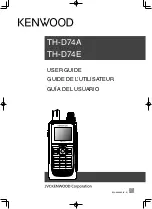
LSI Logic Confidential
Interfaces and I/O
4-7
Copyright © 2001, 2002 by LSI Logic Corporation. All rights reserved.
ITU-R 656
1
source such as low-cost video decoder chips. The video
interface outputs 8- or 16-bit YUV digital video data to low-cost ITU-R
656 encoders.
A compelling feature is the support for 480p (54 MHz, progressive scan)
output, resulting in dramatic video quality improvements on Progressive
TV screens. Integration of this feature on the DMN-8600 lowers system
cost and makes it affordable for the mass consumer.
4.4.5
Audio Interface
The DMN-8600 has a dual serial audio input port capable of two
channels of audio input for stereo recording, and four serial audio output
ports capable of eight channels of audio output for up to eight channel
surround sound reproduction. In addition, it supports an S/PDIF output
interface port, which is fully IEC-958 compliant.
The serial audio input port receives uncompressed 16- to 24-bit serial
digital audio data from external audio A/D or AES/SPDIF devices. An
externally or internally generated clock provides bit serial clocking of the
data coming from an external ADC pair. An externally or internally
generated frame sync provides synchronization of frames. Frames are
organized as two samples per frame.
The four serial audio output ports send uncompressed 16- to 24-bit
digital audio to external audio DACs or S/PDIF devices. An externally or
internally generated clock provides synchronous bit serial clocking for all
four ports. An internally generated frame sync provides synchronization
of frames for all four ports. Each port is capable of handling two channels
of serial audio data, with two samples per frame.
4.4.6
SDRAM Interface
The 32-bit SDRAM interface generates the address and control signals
needed to support one to four 64 Mbit or 128 Mbit SDRAM chips. The
SDRAM clock operates at up to 148.5 MHz. This means that DDR
(double data rate) SDRAM can transfer data at a maximum effective rate
of 297 MHz with two data transfers per clock cycle on the 148.5MHz bus
clock. The DRAM configurations supported are one to two 2 M x 32 or
1. “ITU-R 656” refers to the ITU-R BT.656 standard (formerly known as CCIR 656).
















































